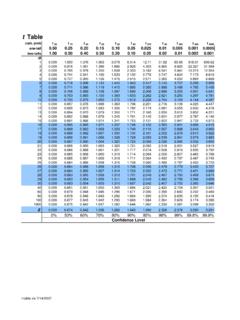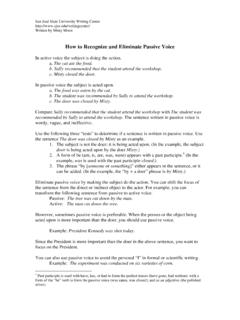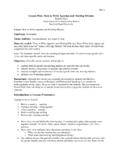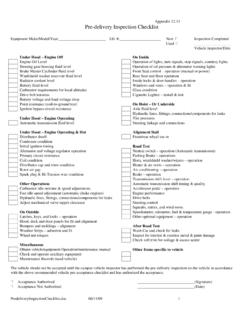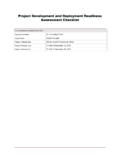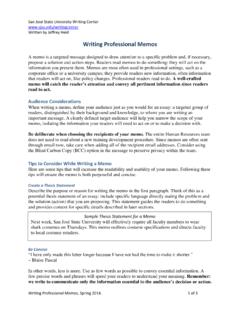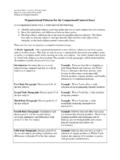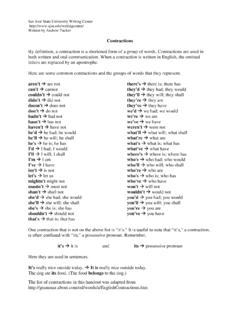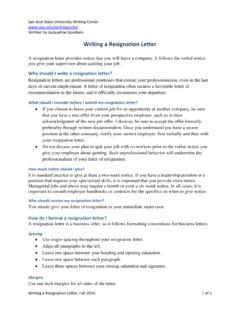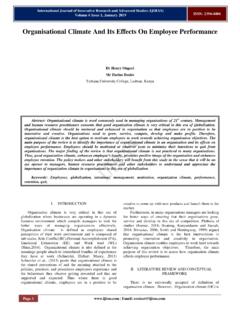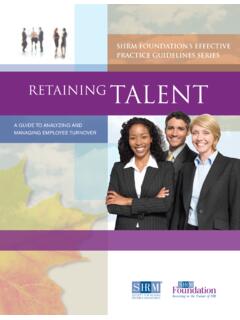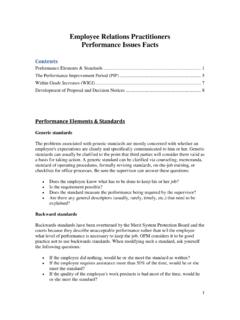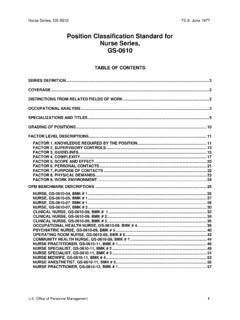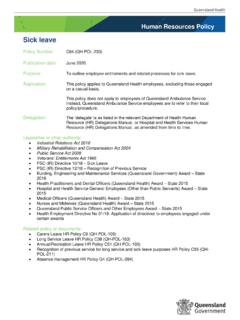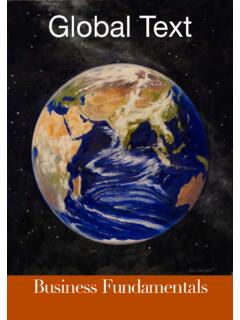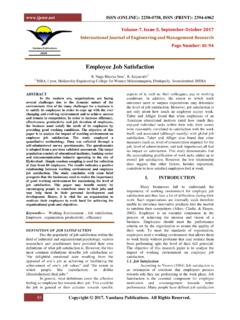Transcription of To Public Relations
1 Introduction To Public Relations Mathew Cabot, San Jose State University AJEEP 2012 AJEEP Introduction to Public Relations Course Contents Section 1 Course Syllabus Section 2 Key Vocabulary Section 3 Lecture One Public Relations Defined PowerPoint Slides Section 4 Lecture Two The Foundational Principles of PR PowerPoint Slides Section 5 Lecture Three The RACE Process PowerPoint Slides Section 6 Lecture Four Persuasion PowerPoint Slides Section 7 Lecture Five Finding &
2 Generating News PowerPoint Slides Section 8 Lecture Six PR Trends PowerPoint Slides 1 AJEEP Introduction to Public Relations Course Description Principles, evolution, and professional practice of modern Public Relations . Concepts of planning and executing effective communication strategies, including message design and distribution, for any organization. Course Goals and Student Learning Objectives The primary purpose of this course is to familiarize students with the basic concepts and principles of effective Public Relations .
3 Upon successful completion of this course, students will be able to: LO1 Demonstrate knowledge regarding the role and function of contemporary Public Relations in today s society and in the global economy. LO2 Demonstrate knowledge of the evolution of Public Relations throughout history, and the range of careers available in today s contemporary practice. LO3 Demonstrate knowledge of the basic process of Public Relations research, planning, communication, evaluation and how to apply this process to various situations. LO4 Demonstrate knowledge regarding the basic theories of communication/persuasion and how to apply them to specific Public Relations situations.
4 Required Text There is no required textbook for this course. However, students who wish to have more information about the concepts discussed in this course could purchase the following textbook: Wilcox, Dennis, et al. (2012) THINK Public Relations (2nd ed.). New York, NY: Pearson Education. Assignments/Readings Each class session will begin with a current review and discussion of the Public Relations stories in the news.
5 Students will be expected to keep up with current events and be prepared to discuss news items in the context of course theories and concepts. In addition to class participation, students will be graded on one major class project: the development of a Public Relations plan. Students will be expected to create a Public Relations plan for a profit or not- for- profit organization that includes the following elements: (1) Situation Analysis, (2) Organization Analysis ( ), (3) 2 Audience Analysis, (4) Goals and Objectives, (5) Messages/Themes, (6) Strategies and Tactics (including evaluation measures), (7) Budget, (8) Calendar/Timeline.
6 The Public Relations plan will be evaluated based on the student s demonstrated understanding of the RACE (Research, Action, Communication, Evaluation) process and on well the plan is written ( , typos and grammatical errors will affect your grade). Here s the points breakdown: Category Points Participation 30 PR Plan 70 TOTAL = 100 Grades are computed according the following university standards: 97- 100% = A+ 93- 96% = A 90- 92% = A- 87- 89% = B+ 83- 86% = B 80- 82% = B- 77- 79% = C+ 73- 76% = C 70- 72% = C- 67- 69% = D+ 63- 66% = D 60- 62% = D- Below 60% = F Introduction to Public Relations /Course Schedule Class Topic 1 Defining Public Relations (History/Evolution of the Profession)
7 2 Top 10 Foundational Principles of Public Relations 3 RACE (Research, Action, Communication, Evaluation) 4 Persuasion (Theories; Characteristics of Legitimate PR Campaign) 5 Finding & Generating News (and Effective Media Relations ) 6 PR Trends (Where the Profession is Headed) AJEEP Introduction to Public Relations Vocabulary press agent spin stakeholder Public opinion two- way communication dialogue trust ROI (return on investment)
8 Mutually beneficial relationships consent hype manipulation clarity results managing expectations proactive Public Relations persuasion message communication selective attention selective perception social media viral video transparency strategy tactics goals objectives content creation communication conglomerate 1 AJEEP 2012 Public Relations Dr. Mathew Cabot Lecture One Public Relations Defined Welcome to the AJEEP six-hour course on Public Relations . This course provides an overview on the Public Relations profession.
9 It describes the profession s history and evolution, the four-step Public Relations process, strategies and tactics, ethical challenges, and the foundational principles followed by Public Relations professionals. In this first lecture, we attempt to define what Public Relations is, and trace the evolution of the profession from its beginnings to the present. The idea of Public Relations has been around as long as people have sought to persuade other people to get them to do something, not do something, or keep on doing something. But Public Relations became a formal profession in America roughly between late 1800s and early 1900s.
10 In the 1800s, Public Relations techniques were used to encourage settlement in the American West. Railroad companies which were laying down new tracks across America employed former journalists to create flyers and pamphlets that described the vast opportunities in the American frontier. And many believe it was the railroad companies that first used the term Public Relations . While railroad companies were promoting westward expansion, the very first celebrity press agents were promoting clients such as Buffalo Bill, Annie Oakley, and Davy Crockett.

